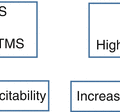Focus on an object while moving the head side to side, up and down (20 times each)
In standing position, shrug shoulder and rotate
In sitting position, bend forward and place an object on the ground (20 times)
Focus on object moving from arm’s length to about 6 in. away from the face
Sitting to standing with eyes open, than eyes shut
Throw ball from hand to hand above eye level (20 times), than under the knee (10 times each knee)
Stand on one foot with eyes open (3 times for 10 s each foot), with eyes shut (3 times for 10 s each foot)
Change from sitting to standing and turn around in between (10 times)
Walk a straight line from heel to toe (5 times for 10 paces)
VR has been shown to promote significant improvements in several aspects of balance, including vestibulo-visual interaction during head movements, static and dynamic postural stability in conditions of conflicting sensory information, and diminished individual sensitivity to head movements [7]. Avocational activities can also be excellent for vestibular rehabilitation, provided that they involve using the eyes while the head and body are in motion. Of course, many avocational activities require this—dancing, yoga, tai chi, golf, and tennis are probably the most adequate for the elderly. Nevertheless, just walking around the block looking from side to side may be a useful activity. Older subjects should find one that is fun, safe, and somewhat stimulating. Most studies on VR are carried out with patients suffering from bilateral vestibular loss (BVL), although an increasing number of data is available regarding people with symptomatic unilateral vestibular loss (UVL). Unfortunately, the data on rehabilitation outcomes of these patients are still not conclusive. In a recent study on BVL, roughly 80% of patients do not improve independently of age, gender, time course of manifestation, and severity: thus, the prognosis seems less favorable than assumed previously [8]. These patients have a “visual dependence,” so they should avoid walking in the dark or without corrective lenses if they have refraction disorders, especially in open spaces. On the opposite, there is a moderate to strong evidence that VR is an effective management for UVL patients and in the studies with a follow-up assessment (3–12 months), positive effects were maintained.
Benign paroxysmal positional vertigo (BPPV) is the most frequent type of peripheral vertigo in the elderly and is still an under-recognized entity. Even on specific questioning, positional vertigo is often not reported by patients suffering from BPPV. Instead, they complain of dizziness, light-headedness, or unsteadiness. This might be due to unconscious limitation and avoidance of movements and positions that evoke vertigo. Thus, a diagnostic positioning test (Hallpike or Semont) should be carried in the elderly complaining of dizziness or vertigo, with the only exception of patients with spinal contraindication, as disc herniation or other severe pathologies of the vertebral column. Unfortunately, most studies on BPPV reveal a low success rate in the treatment of this entity and a higher frequency of recurrences in elderly patients compared to the general population [9]. In a recent Cochrane meta-analysis [10], it was concluded that although there is evidence that the Epley maneuver is an effective treatment for posterior canal BPPV (based on the results of controlled trials with relatively short follow-up), there is no good evidence that this treatment provides a long-term resolution of symptoms. In treated old patients, the estimated recurrence rate of BPPV is 30–50% [10, 11], and the natural resolution of untreated cases is around 20–30% [11]. The maneuver involves sequential movement of the head into four positions, staying in each position for roughly 30 s, with the aim to remove debris or “ear rocks” out of the sensitive part of the ear (posterior canal) to a less sensitive location.
Stay updated, free articles. Join our Telegram channel

Full access? Get Clinical Tree




